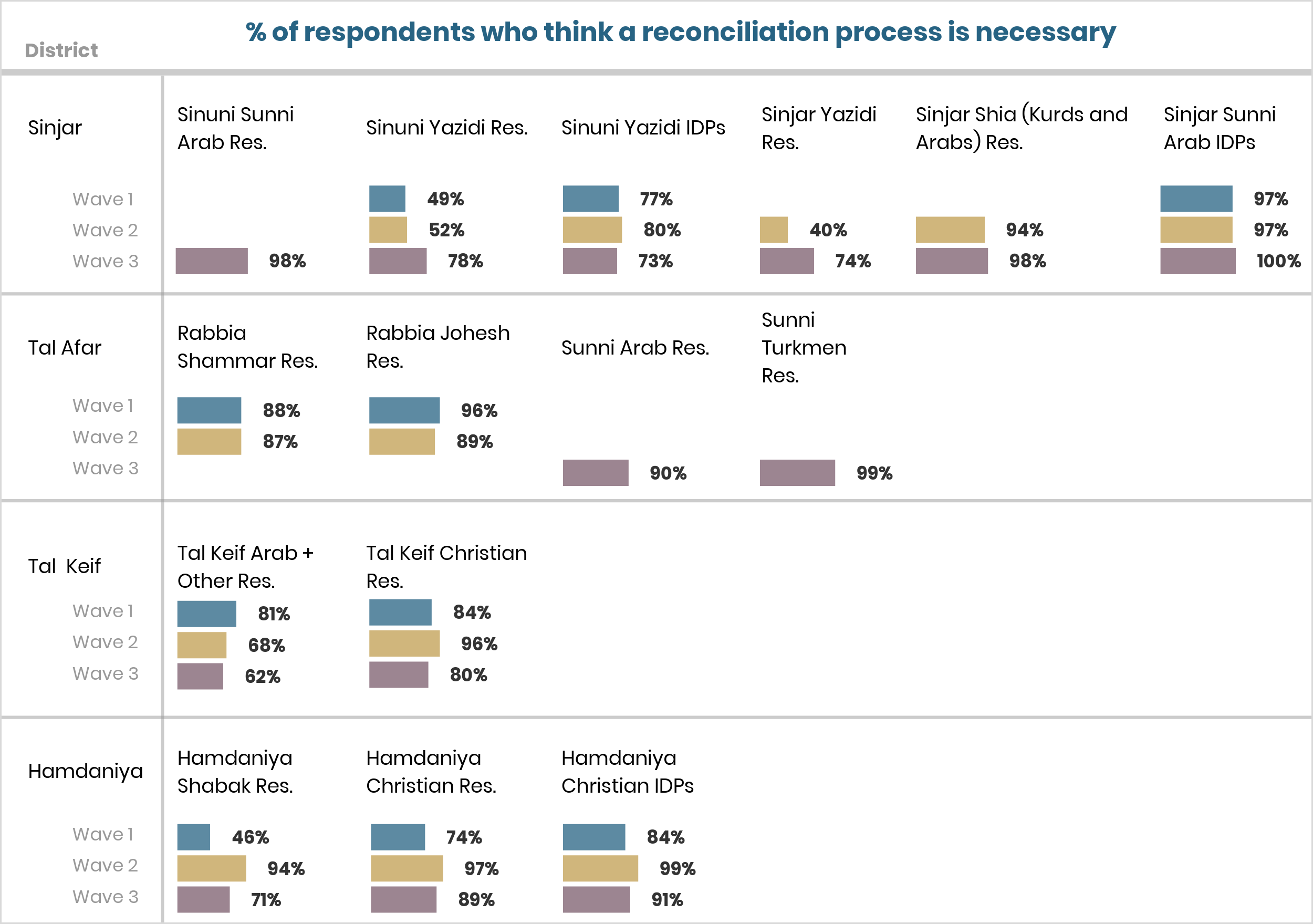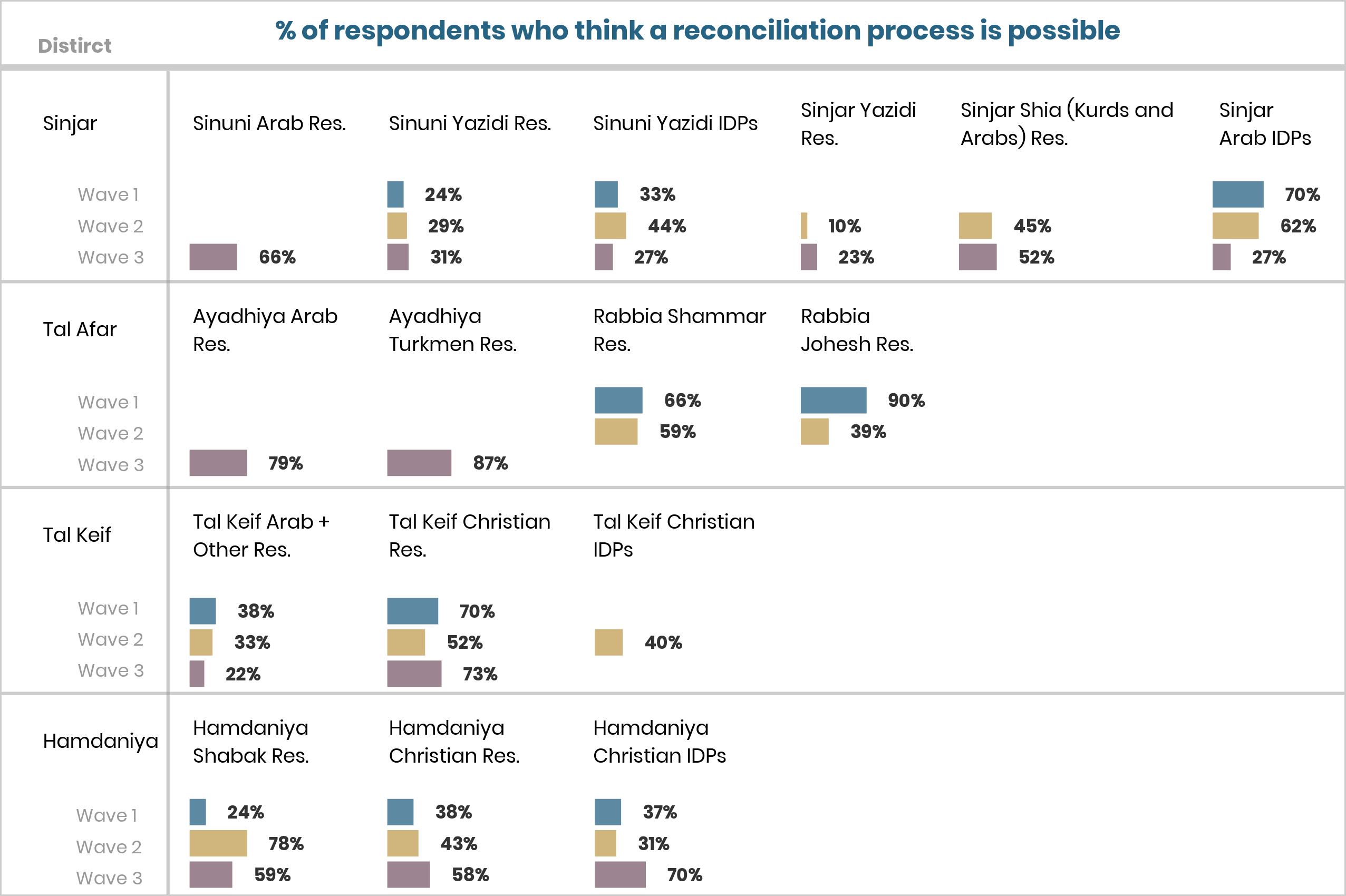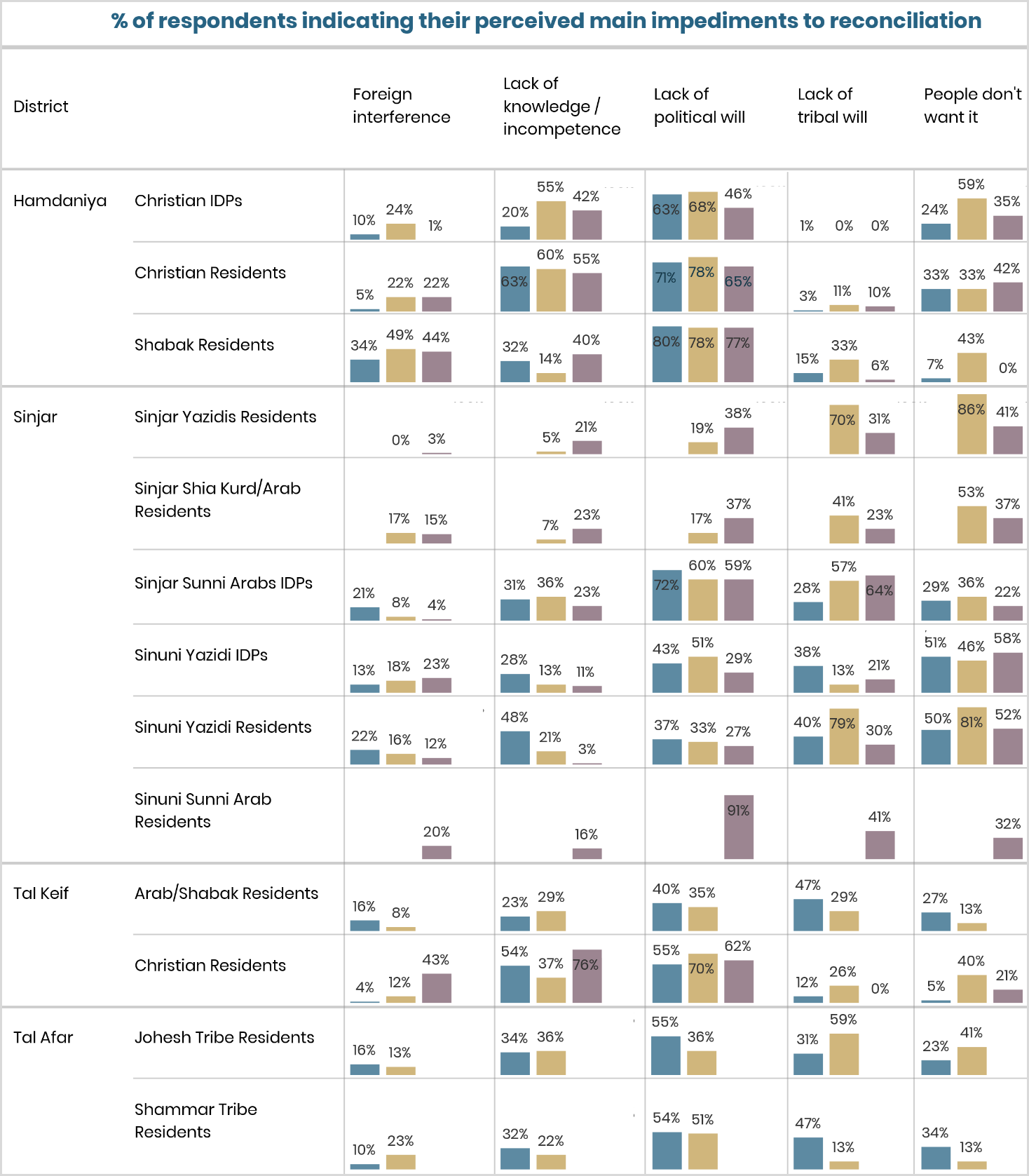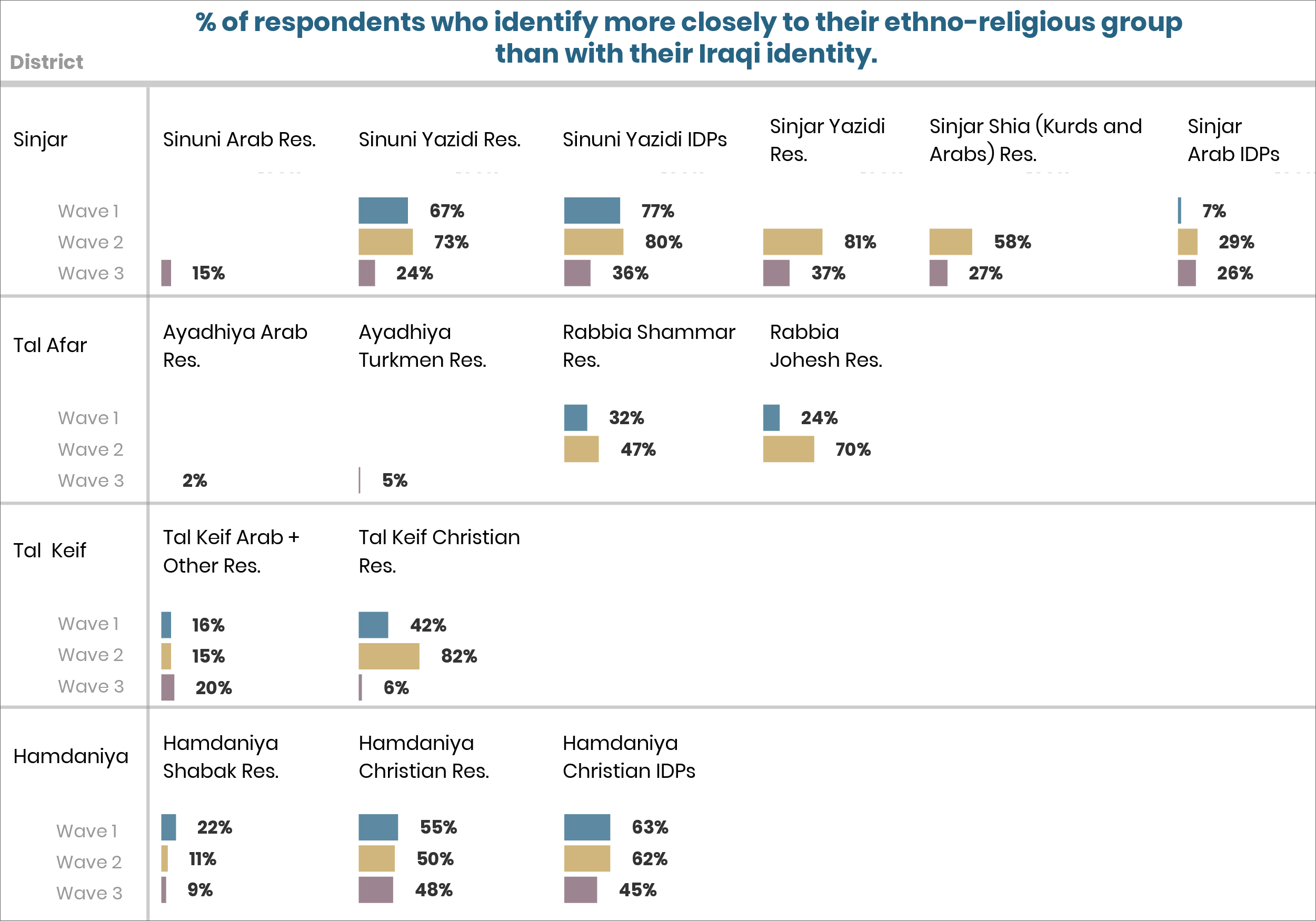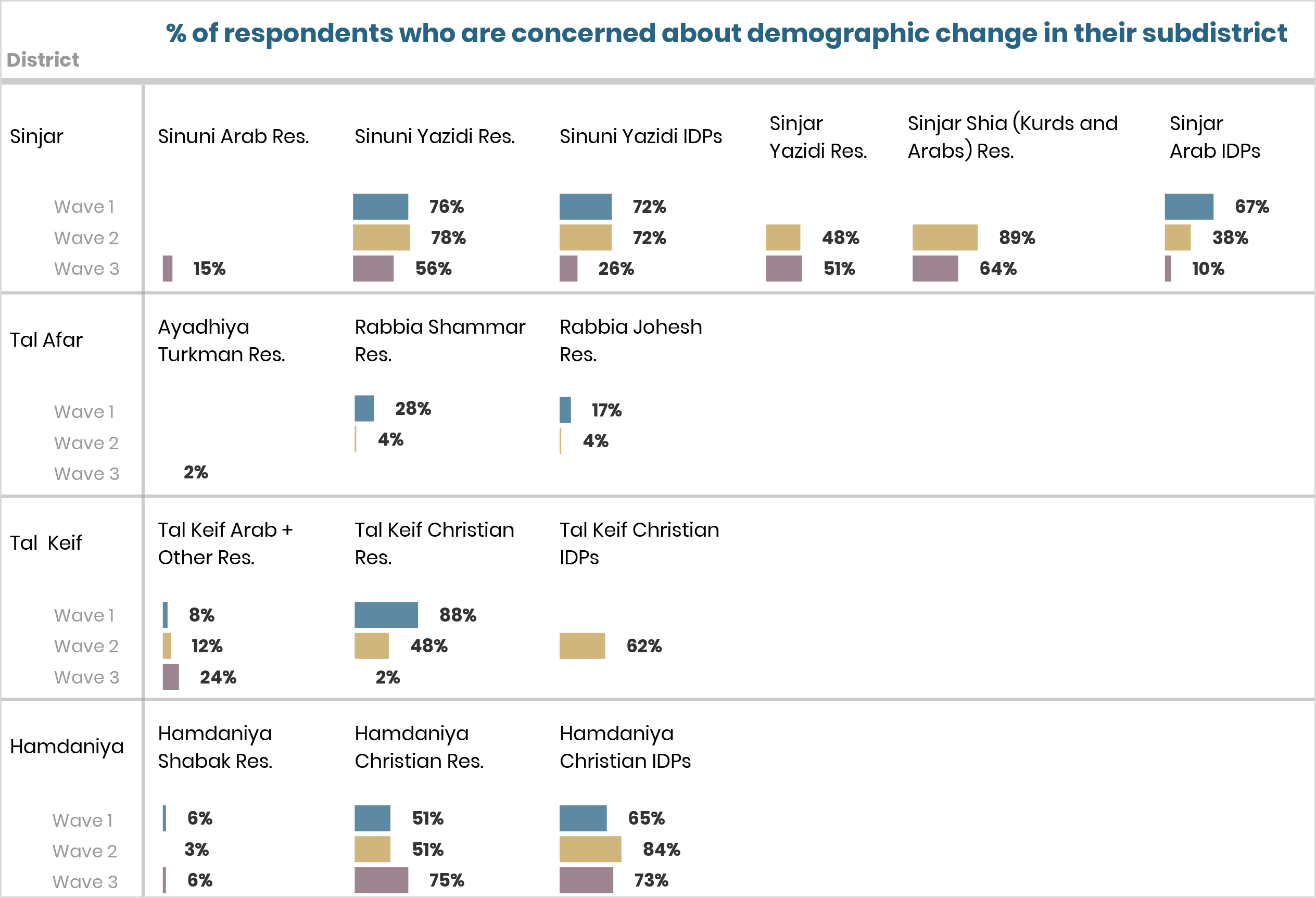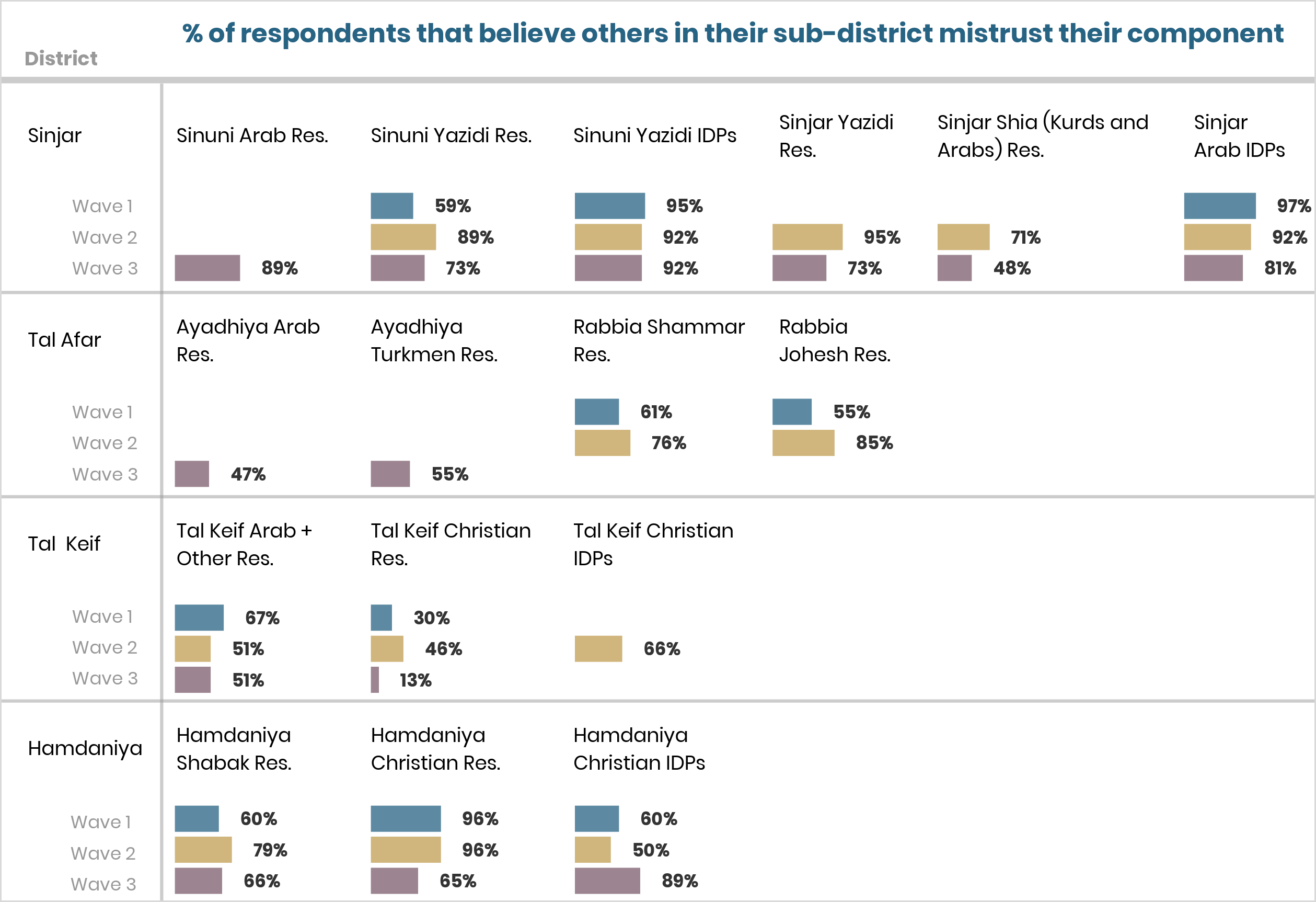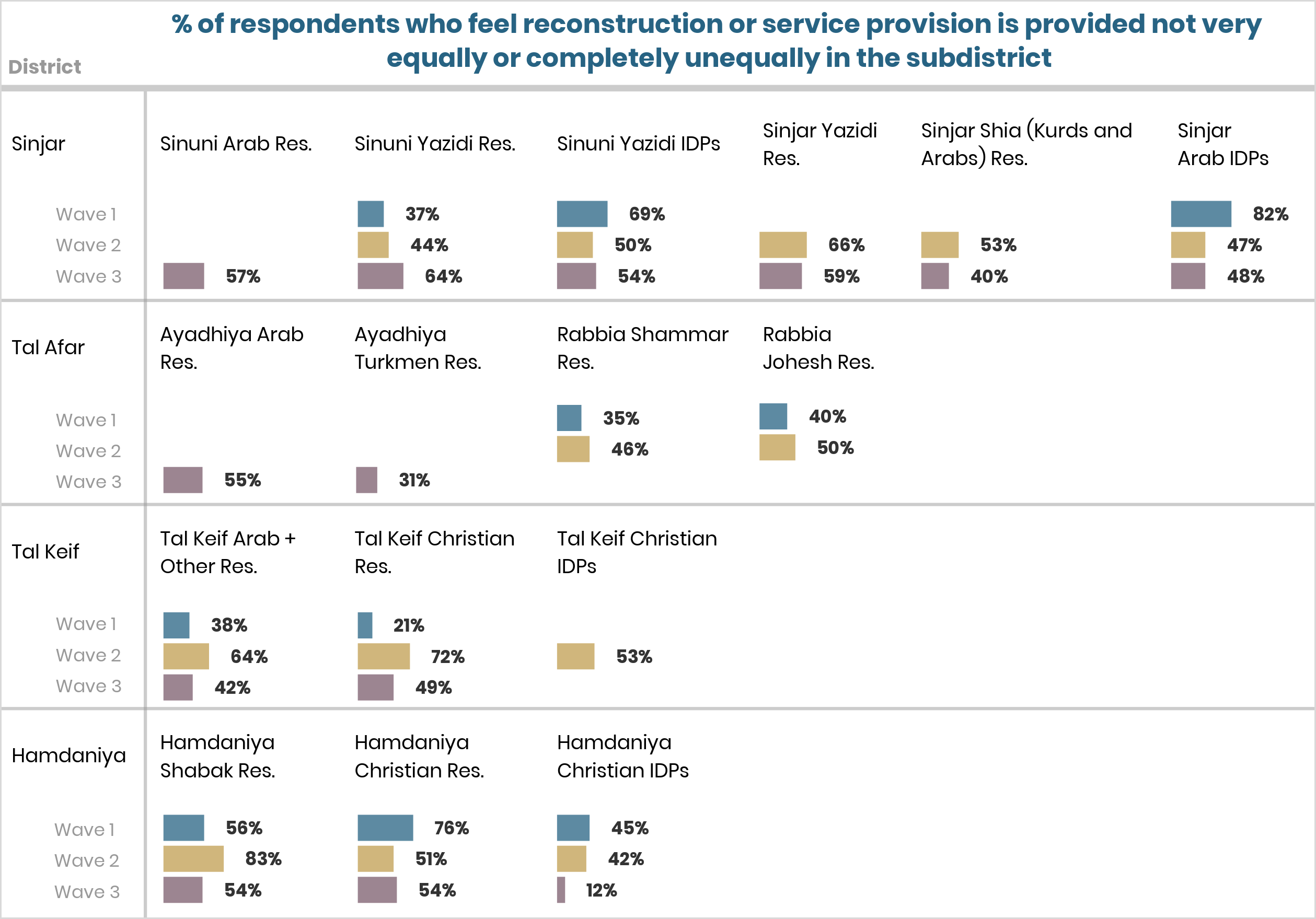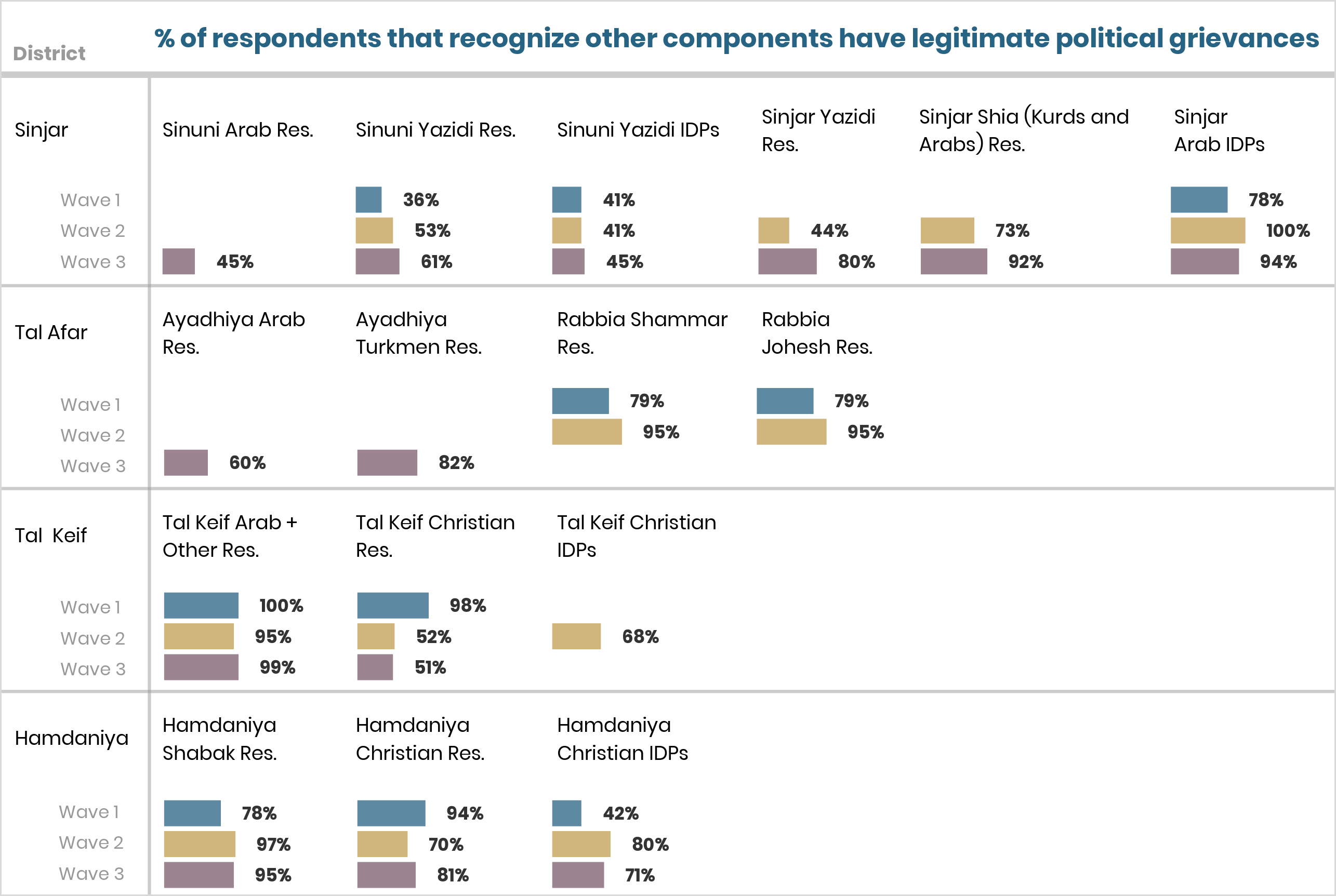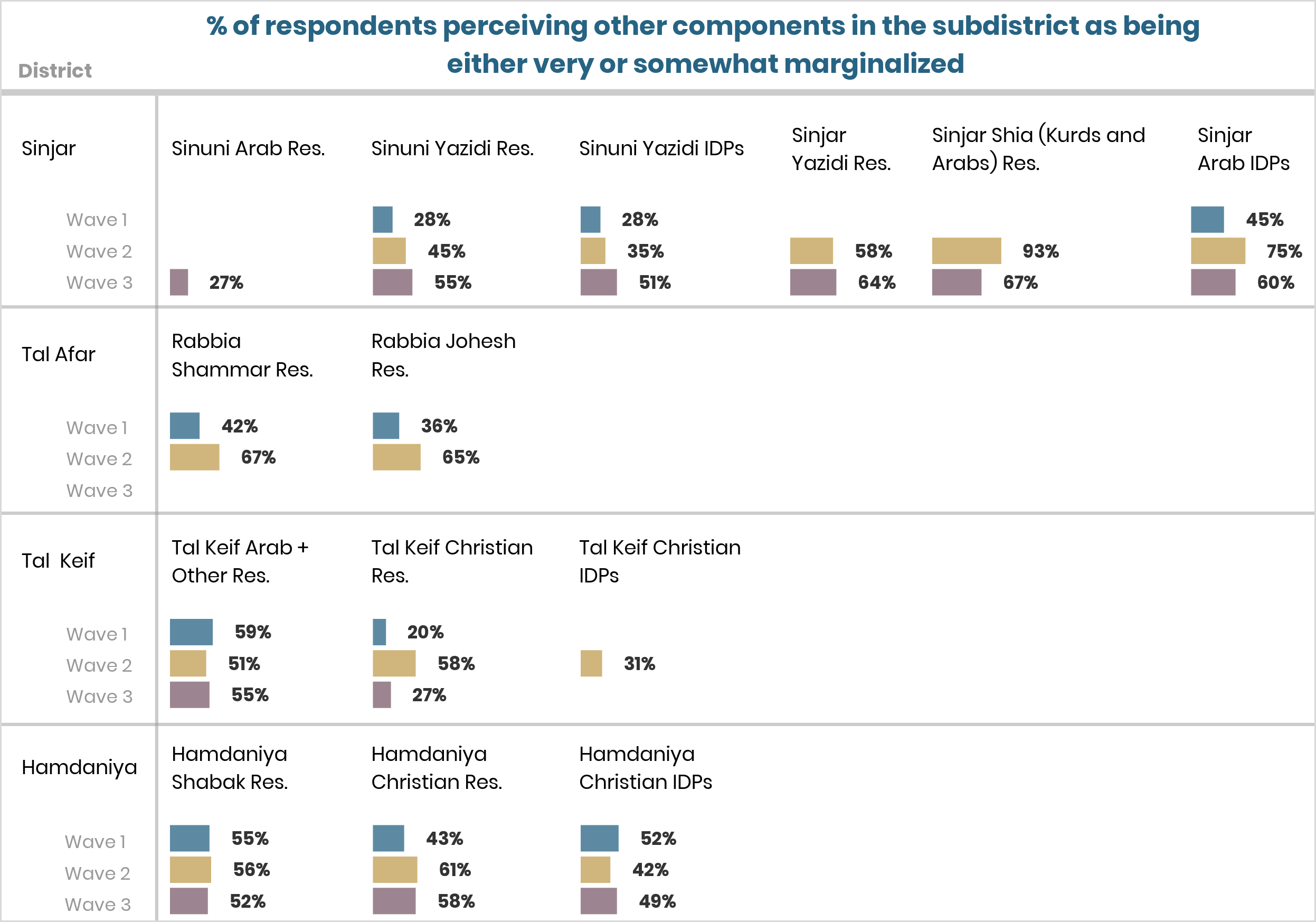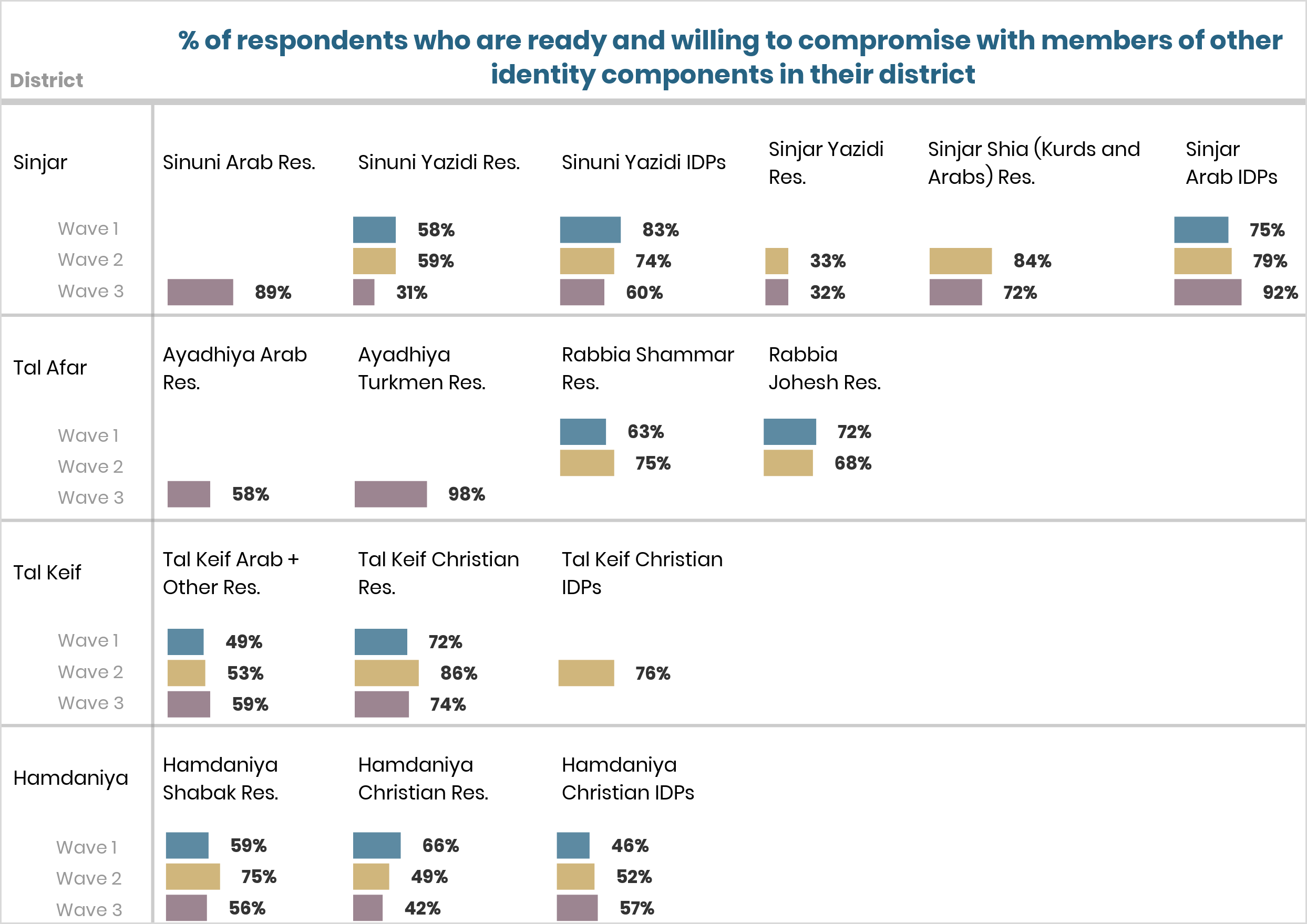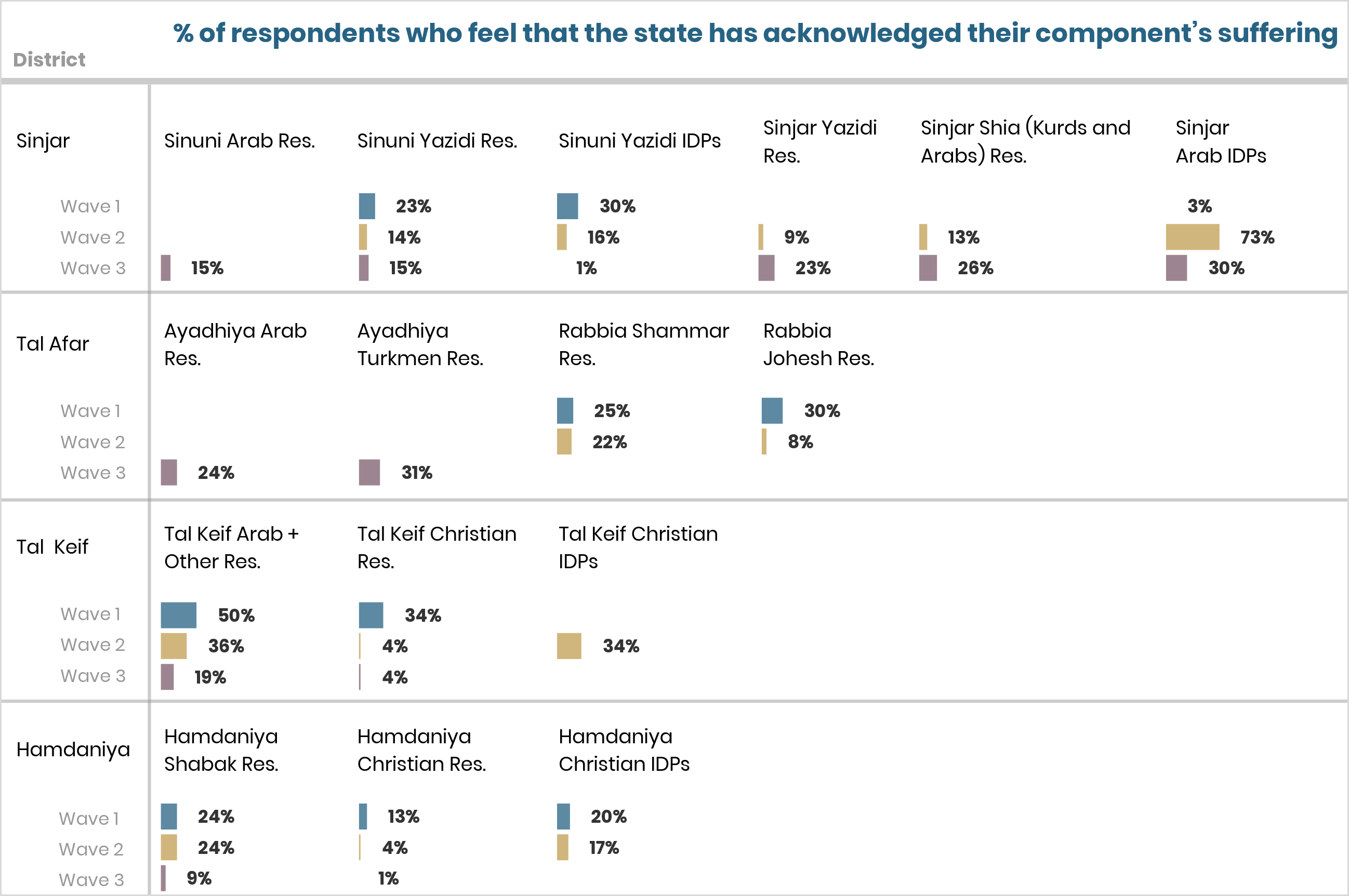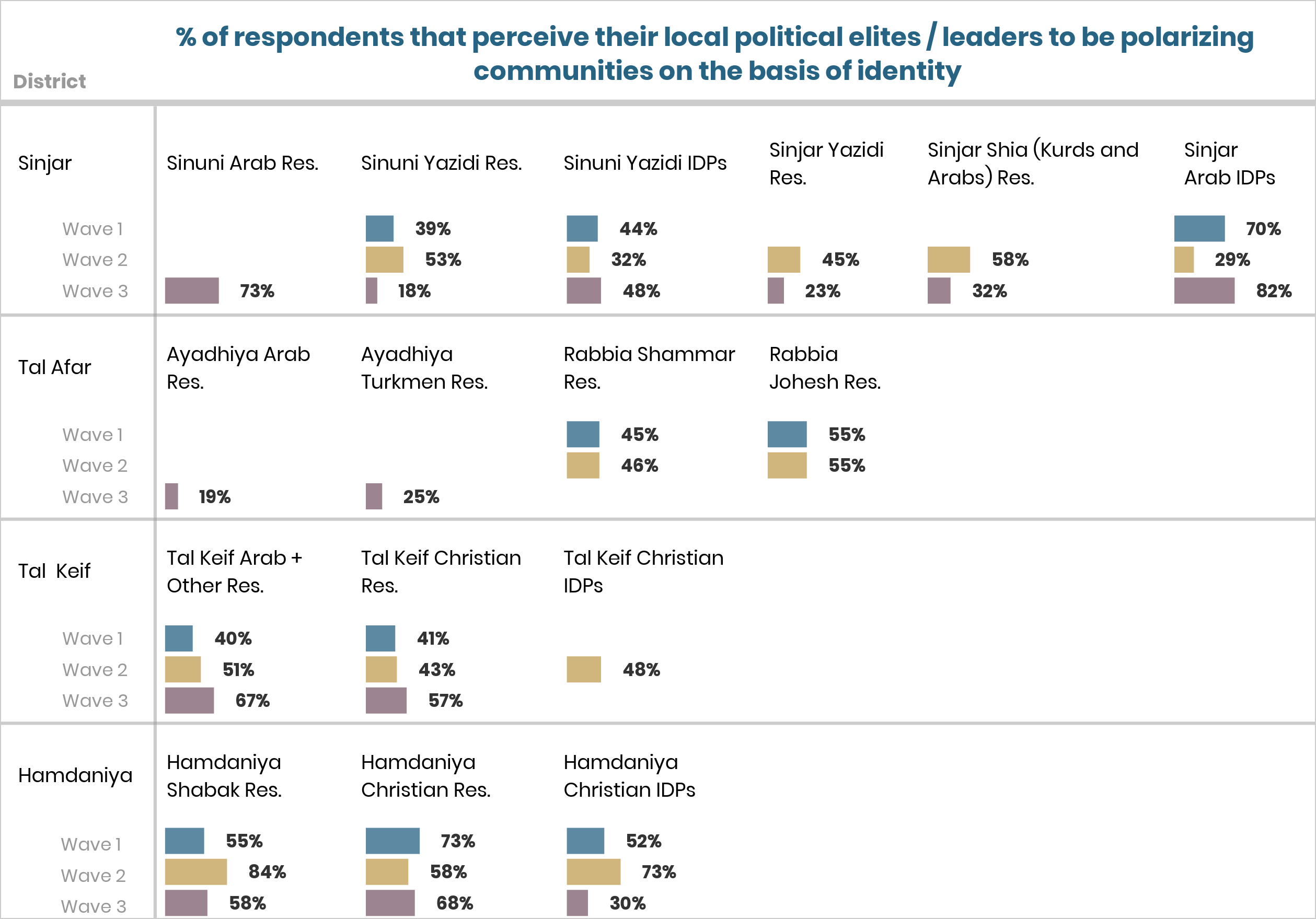A majority of respondents acknowledge the need for reconciliation, but Christians and Yazidis have significant doubts that it is possible, likely due to lack of trust post-ISIS and long-standing grievances as minority communities.
Across locations, each community’s perceptions of obstacles to reconciliation are highly specific to the local context and each community’s particular grievances. But across all locations and communities, the most significant obstacle to reconciliation is lack of political will. This likely stems from the interaction communities have had with government actors tasked with advancing reconciliation, which, despite rhetoric about catering to their grievances, has engendered little progress.
- In Hamdaniya, majorities of both Christians and Shabaks increasingly believe that reconciliation is both necessary and possible. However, Christians perceive that although reconciliation is possible, lack of knowledge and incompetence in current approaches are significant obstacles. These perceptions have caused many Christians to be dismissive of reconciliation processes, regardless of their desire to reconcile. This in turn has led to a general dismissive attitude towards reconciliation and has caused some Christian leaders and community members to withdraw from processes spearheaded by the government and international community.
- Most Yazidis from Sinjar district—both IDPs and those in their home communities—see reconciliation as necessary, but not possible. A significant obstacle they identified is lack of tribal will, signaling that Arab tribal leaders have not done enough. Many also believe that local people do not want to reconcile. This supports qualitative data indicating that Yazidis perceive reconciliation with the Sunni Arab community as contingent on several preconditions, including criminal prosecution, truth-seeking, and compensation and reparations for ISIS crimes.
- Sinjar Yazidis living in their home communities overwhelmingly believe that reconciliation requires a discussion of past violence and abuses, and this inclination increased significantly over time (in Sinuni, from 26 percent in wave one to 84 percent in wave two, and 82 percent in wave three; in Sinjar Center, from 56 percent in wave two to 82 percent in wave three).
- This contrasts starkly with Sinjar’s Sunni Arabs (both IDPs and residents) and Yazidi IDPs. Sunni Arabs living in Sinjar Center and IDPs from Sinuni feel the best way to move on is to leave the past behind without a truth-seeking process. Of Yazidi IDPs from Sinuni, only a third (31 percent) expressed a preference for talking about previous experiences of violence.
- In Tal Keif, both the Christians and other residents (which includes Arabs and Shabaks) believe reconciliation is necessary, but in contrast to Hamdaniya, Arabs and Shabaks are less confident that it is possible. Arab and Shabak responses identifying main impediments to reconciliation were varied and did not show strong identification with any one obstacle. Tal Keif Christians—though they do believe reconciliation is necessary and possible—identified most strongly with lack of political will and lack of knowledge and competence as the main impediments.
